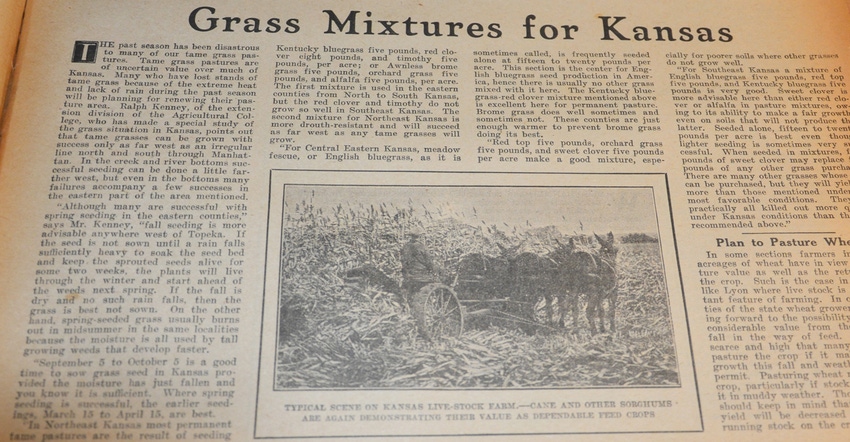August 13, 2018

It was a hot, dry summer in Kansas 100 years ago in 1918 and farmers, who were dedicated to growing crops to support the effort of the U.S. military effort of WWI, were struggling to find feed for their own livestock, let alone abundant corn and wheat to provide for the needs of the country.
Particularly hard-hit were the "tame grass" pastures of Kansas, especially in the northeast where an effort to grow mixtures was being made. Among the most valuable of those forages were cane and other sorghums, along with Kentucky bluegrass, red clover and brome. Cattlemen had not yet come to realize that the very best forages in eastern Kansas was the mixture of prairie grasses that had flourished there for thousands of years.
70 years ago
In September of 1948, Kansas Farmer Washington correspondent Clip Stratton was warning that a battle was shaping up in Congress over farm price supports, which big city groups and their supporters were blaming for a high cost of living and inflation. The prediction was the next Congress would be devoted to trying to figure out how to bring down food prices.
60 years ago
As more use of irrigation grew across southwestern Kansas, the number of crops that could be grown in addition to the region staple, wheat, was growing, Among the specialty crops gaining widespread attention in 1958 were potatoes, corn, grass seed, squash, flax, onions, cantaloupe, castor beans, soybeans, sweet potatoes, pinto beans, sesame and safflower. One potato project, in its first year near Sublette, involved five counties and about 900 acres.
50 years ago
The big topic of conversation back in 1968 as farmers were preparing to seed their hard red winter wheat fields was hybrid wheat. Jim Wilson, director of wheat research for DeKalb Agricultural Association, announced that hybrid wheat would see be released to farmers. Wilson began his research at the Kansas State University Research State at Fort Hays and left in 1961 to join DeKalb. Bill Ross of Hays, a sorghum geneticist, joined Wilson in his work as the pair reasoned that hybrid wheat development could follow the process used successfully for hybrid sorghum.
20 years ago
In the fall of 1998, producers were looking at a near-record wheat production of 495 million bushels and a corn crop of a record 407 million bushels. Adding to the glut of grain was an expected harvest of 254 million bushels of grain sorghum and 95 million bushels of soybeans. The bountiful production created a problem for elevators across the state — where to put it all.
Goerzen is the executive director of Old Cowtown Museum in Wichita, where she lives with husband, Matt, four children, three cats and two dogs.
About the Author(s)
You May Also Like




